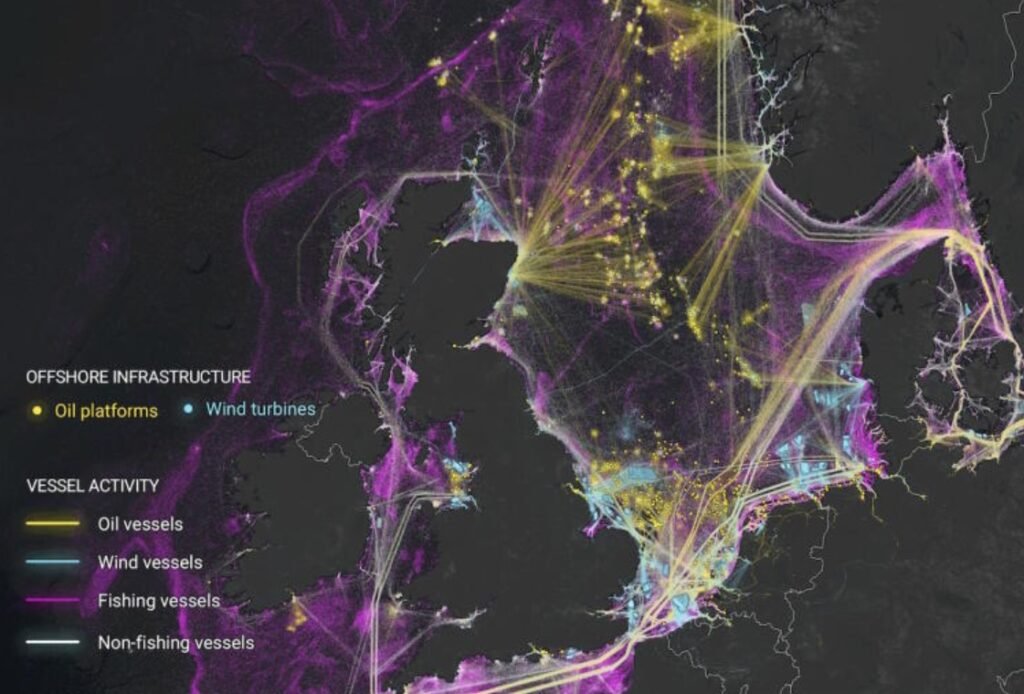A new study reveals the alarming scale and impact of the dark fishing industry, which operates without public tracking or regulation. Using satellite imagery and artificial intelligence, researchers estimated that up to 75% of the world’s large fishing vessels are not being monitored, posing a serious threat to marine life and food security.
Dark fishing refers to the practice of fishing in international waters without reporting or sharing the location, catch, or activity of the vessels. This allows the fishers to evade taxes, quotas, and environmental regulations, and to exploit the resources of the high seas with impunity.

Dark fishing is often associated with illegal, unreported, and unregulated (IUU) fishing, which accounts for up to 26 million tonnes of fish annually, worth up to $23.5 billion. IUU fishing undermines the efforts of legitimate fishers and authorities to manage and conserve fish stocks, and contributes to overfishing, habitat destruction, and human rights violations.
How was the study conducted?
The study, published in the journal Nature Communications, was led by researchers from Global Fishing Watch, a non-profit organization that uses satellite data and machine learning to track fishing activity. They analyzed more than 70,000 satellite images of the oceans taken between 2012 and 2019, and used a deep neural network to identify and count fishing vessels.
The researchers compared their results with the publicly available data from the Automatic Identification System (AIS), a radio-based system that transmits the identity, position, and course of vessels. They found that only 25% of the large fishing vessels detected by satellite imagery were also broadcasting their AIS signals, indicating that the majority of them were operating in the dark.
The study also revealed the geographic distribution of the dark fishing vessels, showing that they were concentrated in regions with high fish abundance, such as the South China Sea, the Arabian Sea, and the Gulf of Guinea. The study also found that China had the largest and most widespread dark fishing fleet, followed by Taiwan, Japan, and South Korea.
What are the implications of the study?
The study provides the first global estimate of the extent and impact of the dark fishing industry, and highlights the need for more transparency and accountability in the management of the high seas. The researchers hope that their methodology and findings will help inform and improve the policies and practices of governments, fisheries organizations, and consumers.
The study also demonstrates the potential of satellite imagery and artificial intelligence to monitor and expose the activities of the dark fishing industry, and to support the enforcement of existing laws and regulations. The researchers call for more collaboration and innovation among the scientific, technological, and environmental communities to address the challenges and opportunities of using these tools.
The study also raises awareness and concern about the plight of the marine life and the people who depend on them, as the dark fishing industry threatens to deplete and destroy the resources and ecosystems of the oceans. The researchers urge the public and the media to pay more attention and take action to protect the oceans and their inhabitants.
